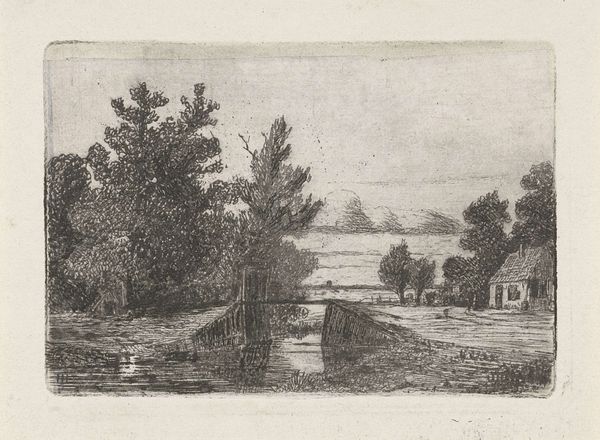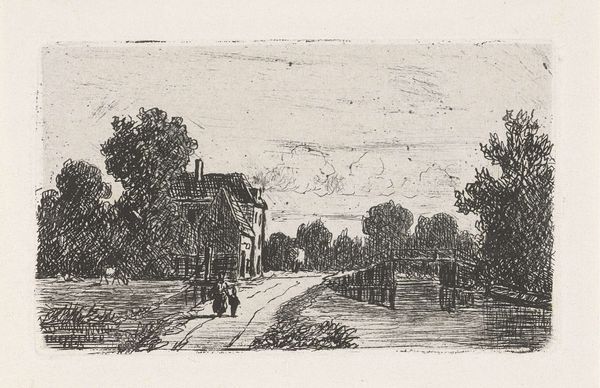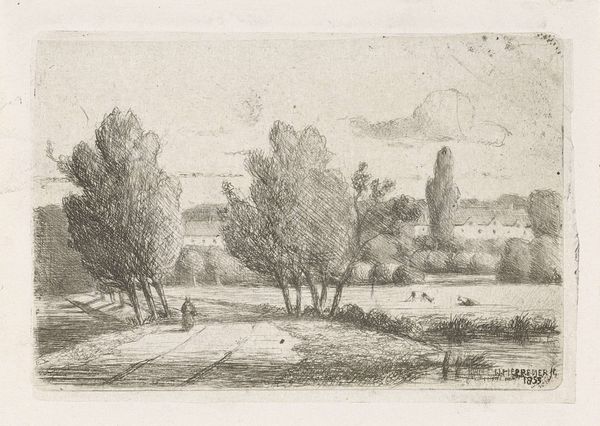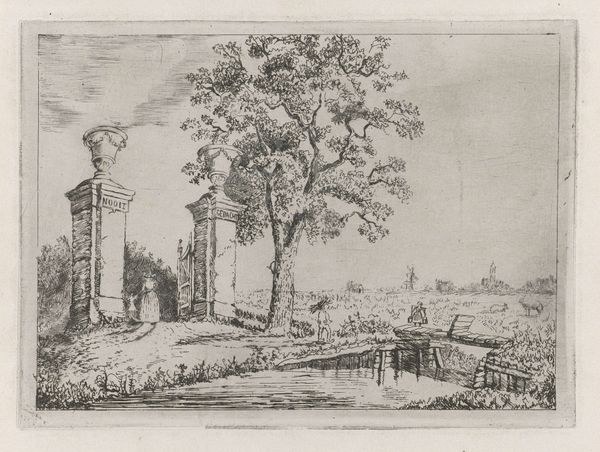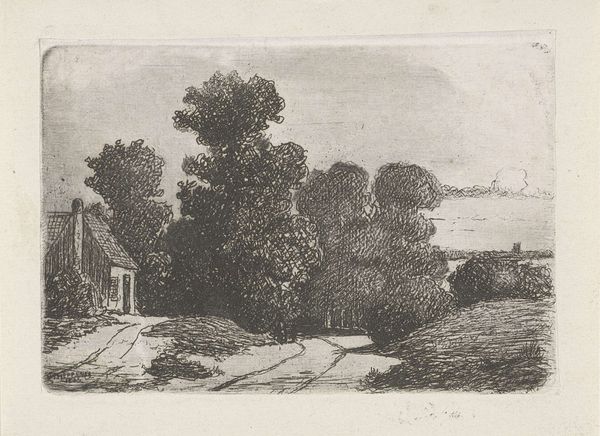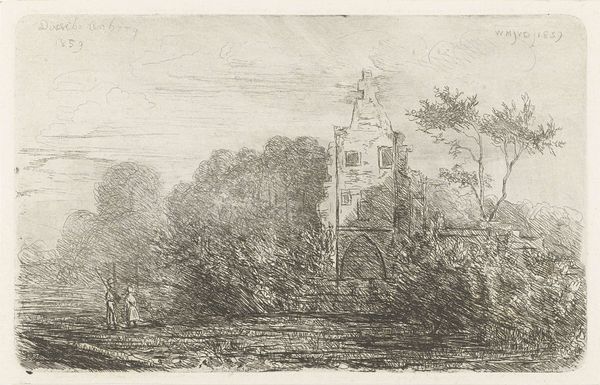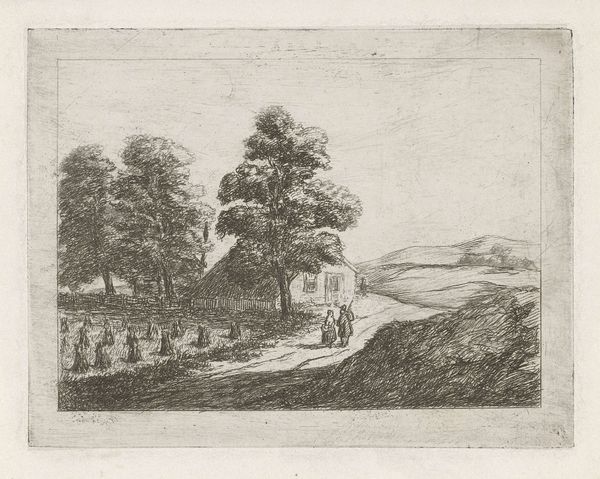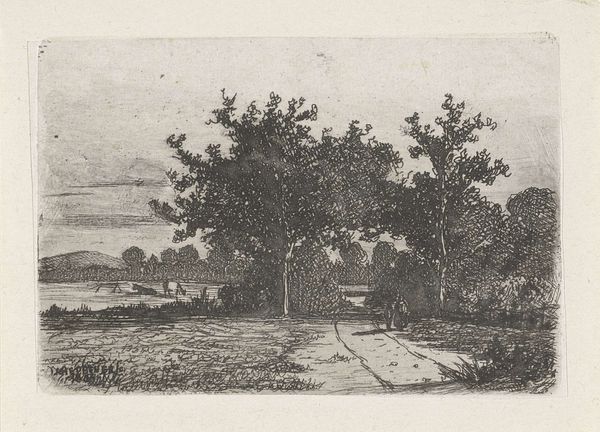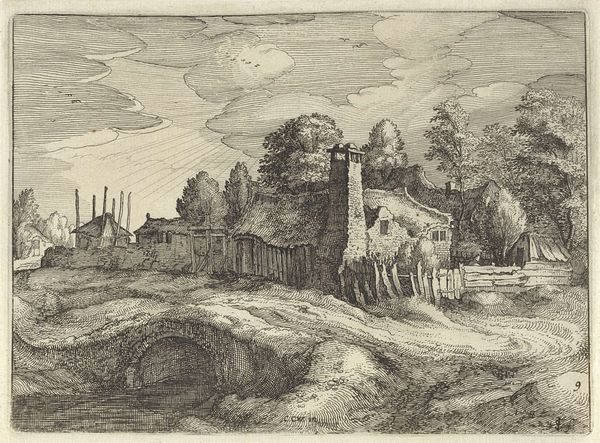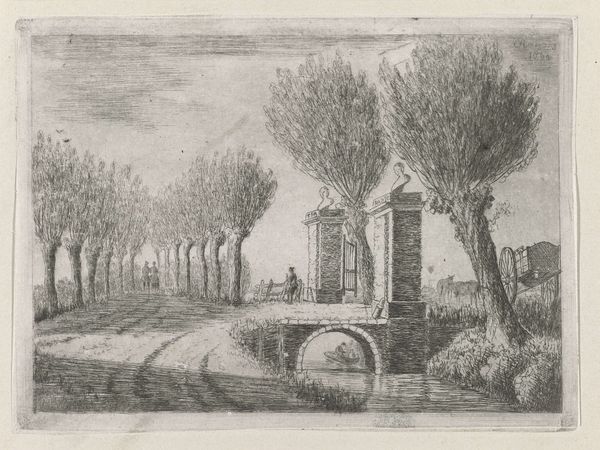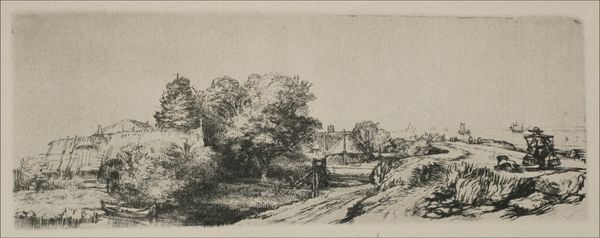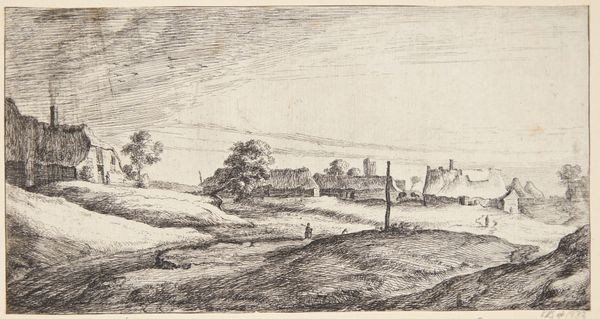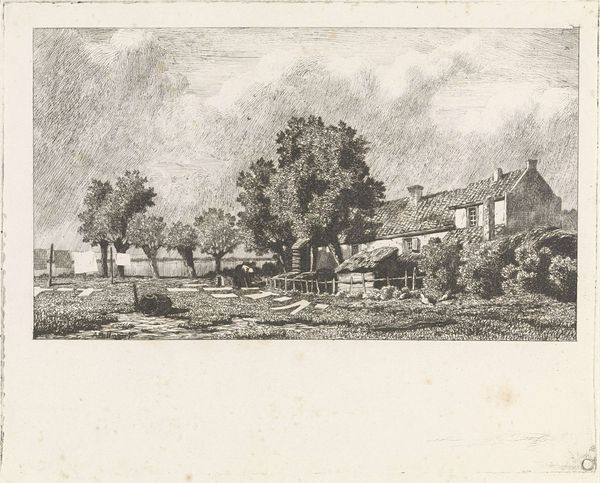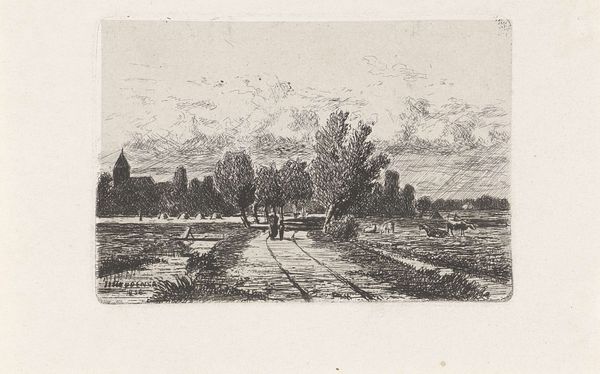
print, etching
# print
#
etching
#
landscape
#
realism
Dimensions: height 73 mm, width 108 mm
Copyright: Rijks Museum: Open Domain
Curator: Before us, we have Jan Heppener’s etching, "Landscape with Stone Bridge and Castle," created sometime after 1855. A fantastic example of realism in printmaking. What are your initial thoughts? Editor: There's an evocative stillness here, isn't there? A palpable quiet in the rendering of the landscape. The artist is interested in representing both the strength of these old forms and how nature relentlessly continues its patient processes of slow change. Curator: Absolutely. This print really emphasizes the accessibility of landscape as a subject in the 19th century. We see the architecture—the castle—as a kind of monument and vestige of older powers, viewed at a bit of a remove. Editor: The castle definitely acts as a cultural anchor, drawing on established traditions, however, I see this small format landscape, which I take to be from life, to be primarily invested in the symbol of the arch: an age old, time honored, natural-seeming symbol, which in art history from Roman architecture on represents that age old human need to "connect, bridge and reach." Curator: That’s a compelling reading of the bridge's symbolism! Given its print form, what message would you argue the artist was sending? The artwork seems almost an exercise in middle-class cultivation and national sentimentality. Editor: Perhaps. This composition has very old roots; even the trees function as stand-ins for timeless values. The image evokes an experience that goes back long before Heppener, and to an experience and place which, he trusts, will persist long after him. Its ubiquity as a message, therefore, might reflect and encourage a shared cultural foundation, independent of overt state powers. Curator: You’re making me reconsider the agency of the landscape in forging national and individual identity in 19th century Netherlands! It seems almost democratic and anti-authoritarian, especially compared to portraiture from the period. Editor: Right! But these two features of society --power and cultural identity -- aren't at odds so much as working together to create that unique and always changing cultural experience that defines Dutch culture in that era. Curator: I agree! What appears conventional contains surprising depths. Thanks for that iconographic journey! Editor: My pleasure! It's the quiet, unassuming art like this that really whispers to us about the flow of visual history and psychology of being and time.
Comments
No comments
Be the first to comment and join the conversation on the ultimate creative platform.
